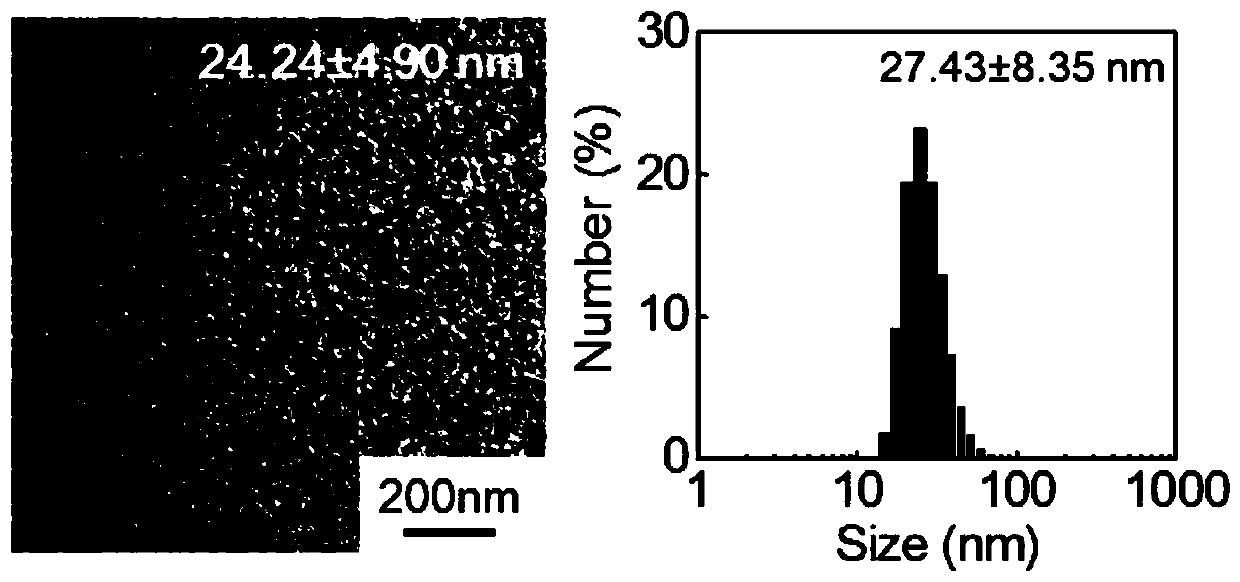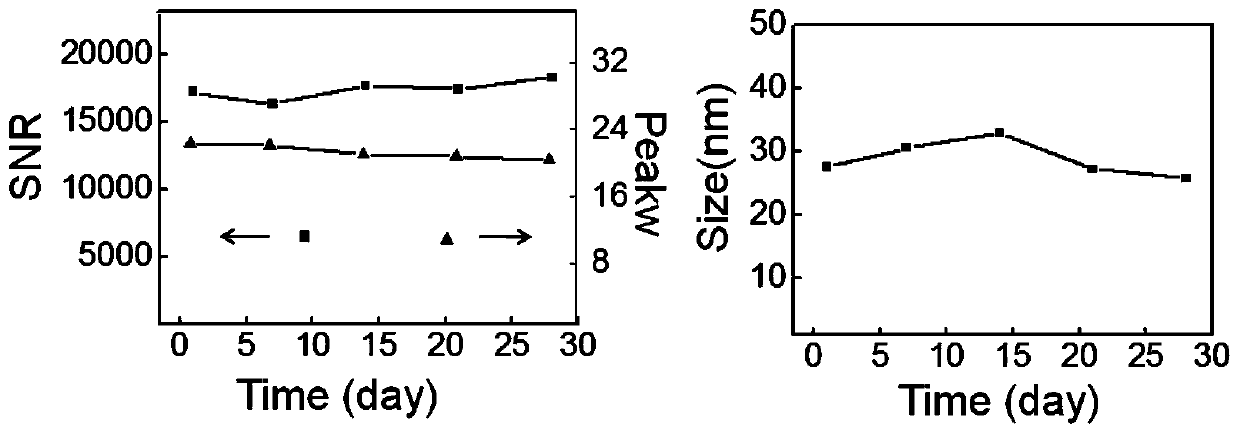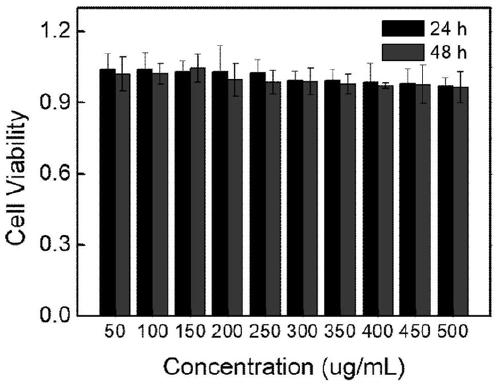Preparation method of 19F magnetic resonance imaging nanoprobe
A technology of magnetic resonance imaging and nanoprobes, which is applied in the field of preparation of applied nanomaterials, can solve the problems of being unable to be directly applied to biological imaging, not being widely used, and having high biological toxicity, and achieves simple and fast preparation methods, low cost, Good biocompatibility effect
- Summary
- Abstract
- Description
- Claims
- Application Information
AI Technical Summary
Problems solved by technology
Method used
Image
Examples
Embodiment 1
[0018] a. Add 0.4g of polysuccinimide to 50mL of methanol, heat up and stir evenly, and put it into the reaction kettle;
[0019] b. Add 1.0mL trifluoroethylamine and 50mg amino PEG to the reaction kettle;
[0020] c. Put the reaction kettle into an oven and react at 200 degrees Celsius for 5 hours;
[0021] d. Take it out after cooling to room temperature, dry it in vacuum to remove the solvent, and the product obtained is dispersed in deionized water, and obtained by self-assembly 19 F Magnetic resonance imaging nanoprobes.
Embodiment 2
[0023] a. Add 0.4g polysuccinimide to 50mL ethanol, heat up and stir evenly, and put it into the reaction kettle;
[0024] b. Add 0.5mL trifluoroethylamine and 50mg amino PEG to the reaction kettle;
[0025] c. Put the reaction kettle into an oven and react at 200 degrees Celsius for 5 hours;
[0026] d. Take it out after cooling to room temperature, dry it in vacuum to remove the solvent, and the product obtained is dispersed in deionized water, and obtained by self-assembly 19 F Magnetic resonance imaging nanoprobes.
Embodiment 3
[0028] a. Add 0.4g of polysuccinimide to 50mL of N,N dimethylformamide, heat up and stir evenly, and put it into the reaction kettle;
[0029] b. Add 0.5mL trifluoroethylamine and 50mg amino PEG to the reaction kettle;
[0030] c. Put the reaction kettle into an oven and react at 200 degrees Celsius for 5 hours;
[0031] d. Take it out after cooling to room temperature, dry it in vacuum to remove the solvent, and the product obtained is dispersed in deionized water, and obtained by self-assembly 19 F Magnetic resonance imaging nanoprobes.
PUM
 Login to View More
Login to View More Abstract
Description
Claims
Application Information
 Login to View More
Login to View More - R&D
- Intellectual Property
- Life Sciences
- Materials
- Tech Scout
- Unparalleled Data Quality
- Higher Quality Content
- 60% Fewer Hallucinations
Browse by: Latest US Patents, China's latest patents, Technical Efficacy Thesaurus, Application Domain, Technology Topic, Popular Technical Reports.
© 2025 PatSnap. All rights reserved.Legal|Privacy policy|Modern Slavery Act Transparency Statement|Sitemap|About US| Contact US: help@patsnap.com



